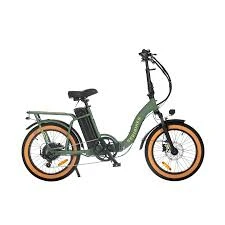
- Afrikaans
- Albanian
- Amharic
- Arabic
- Armenian
- Azerbaijani
- Basque
- Belarusian
- Bengali
- Bosnian
- Bulgarian
- Catalan
- Cebuano
- Corsican
- Croatian
- Czech
- Danish
- Dutch
- English
- Esperanto
- Estonian
- Finnish
- French
- Frisian
- Galician
- Georgian
- German
- Greek
- Gujarati
- Haitian Creole
- hausa
- hawaiian
- Hebrew
- Hindi
- Miao
- Hungarian
- Icelandic
- igbo
- Indonesian
- irish
- Italian
- Japanese
- Javanese
- Kannada
- kazakh
- Khmer
- Rwandese
- Korean
- Kurdish
- Kyrgyz
- Lao
- Latin
- Latvian
- Lithuanian
- Luxembourgish
- Macedonian
- Malgashi
- Malay
- Malayalam
- Maltese
- Maori
- Marathi
- Mongolian
- Myanmar
- Nepali
- Norwegian
- Norwegian
- Occitan
- Pashto
- Persian
- Polish
- Portuguese
- Punjabi
- Romanian
- Russian
- Samoan
- Scottish Gaelic
- Serbian
- Sesotho
- Shona
- Sindhi
- Sinhala
- Slovak
- Slovenian
- Somali
- Spanish
- Sundanese
- Swahili
- Swedish
- Tagalog
- Tajik
- Tamil
- Tatar
- Telugu
- Thai
- Turkish
- Turkmen
- Ukrainian
- Urdu
- Uighur
- Uzbek
- Vietnamese
- Welsh
- Bantu
- Yiddish
- Yoruba
- Zulu
Dec . 04, 2024 23:50 Back to list
wireless mountain bike shifter
Revolutionizing Cycling The Rise of Wireless Mountain Bike Shifters
In recent years, the cycling industry has witnessed groundbreaking advancements in technology, particularly in the realm of mountain biking. One of the most intriguing innovations is the emergence of wireless mountain bike shifters. This technological leap is set to transform the way cyclists experience their rides, enhancing both performance and convenience.
Understanding Wireless Mountain Bike Shifters
Wireless mountain bike shifters are devices that allow riders to change gears without the need for traditional cables and housing. Instead, they use wireless signals to communicate between the shifter and the derailleur, enabling seamless and efficient gear changes. This innovation promises to provide a cleaner, clutter-free look to bike setups while also reducing the weight associated with traditional shifting systems.
The Benefits of Going Wireless
1. Reduced Weight and Complexity
One of the most significant advantages of wireless mountain bike shifters is the reduction in weight. Traditional gear systems require cables, which not only add weight but also complicate installations and maintenance. Wireless shifters eliminate the need for these cables, resulting in a lighter overall bike. This can make a considerable difference for mountain bikers who often aim for performance and agility.
Wireless shifters offer a sleeker look as they do away with unsightly cables winding around the frame. This minimalist aesthetic appeals to many cyclists who prioritize style alongside function. Moreover, a cleaner setup reduces potential snag points when navigating through dense trails or obstacles, adding an extra layer of safety.
3. Enhanced Performance and Precision
wireless mountain bike shifter

Riders often find that wireless systems provide crisper, more reliable shifts compared to their mechanical counterparts. This is largely due to the absence of cable stretch and friction, which can affect shifting performance over time. Wireless shifters utilize high-frequency signals to ensure quick and precise gear changes, allowing cyclists to focus on their performance rather than worrying about gear mishaps.
4. User-Friendly Setup and Maintenance
Setting up wireless shifters can be easier than that of traditional systems. With fewer components to manage, installation tends to be straightforward. Many wireless models come with companion apps that assist users in configuring their settings, checking the battery level, and even troubleshooting issues right from their smartphones. This tech-savvy approach makes maintenance less daunting, particularly for novice cyclists.
Addressing Battery Life Concerns
One of the most common concerns associated with wireless technology is battery life. Fortunately, manufacturers have made significant strides in this area. Modern wireless mountain bike shifters are designed to offer extensive battery life, often lasting several months on a single charge. Some systems even feature low battery indicators, ensuring that riders are never caught off guard during an important ride. The ease of replacing or charging batteries has also been streamlined, making it a hassle-free process.
Challenges and Considerations
While wireless shifters offer numerous benefits, they are not without challenges. The price point can be significantly higher than traditional systems, which may deter some cyclists. Additionally, electronic components are susceptible to the elements, making thoughtful design and robust materials essential to ensure reliability in rugged conditions. However, as technology improves, it is likely that costs will decrease, making these innovations more accessible to the average rider.
Conclusion
Wireless mountain bike shifters represent a significant advancement in cycling technology, promising to improve the efficiency, aesthetics, and overall experience of mountain bikers. As this market continues to expand, more cyclists will inevitably gravitate toward these innovative systems, drawn by the allure of a seamless ride without the constraints of traditional cable systems. While challenges remain, the potential for wireless technology in mountain biking is exciting and suggests a future where performance and convenience coalesce to redefine the sport. For both casual riders and competitive athletes, investing in wireless mountain bike shifters may be one of the most progressive steps they can take toward enhancing their riding experience.
-
The Ultimate Kids' Four-Wheeler Experience
NewsJul.09,2025
-
The Ultimate Guide to Mountain Bikes: Gear Up for Your Ride
NewsJul.09,2025
-
The New Age of Cycling: Electric Bikes for Every Rider
NewsJul.09,2025
-
The Best Kids Bicycles: Ride in Style and Safety
NewsJul.09,2025
-
The Best 3-Wheel Scooters for Kids: Fun, Safety, and Adventure
NewsJul.09,2025
-
Revolutionize Your Ride: Affordable Electric Bikes
NewsJul.09,2025
-
Finding the Perfect Mountain Bike for Every Rider
NewsJul.09,2025



